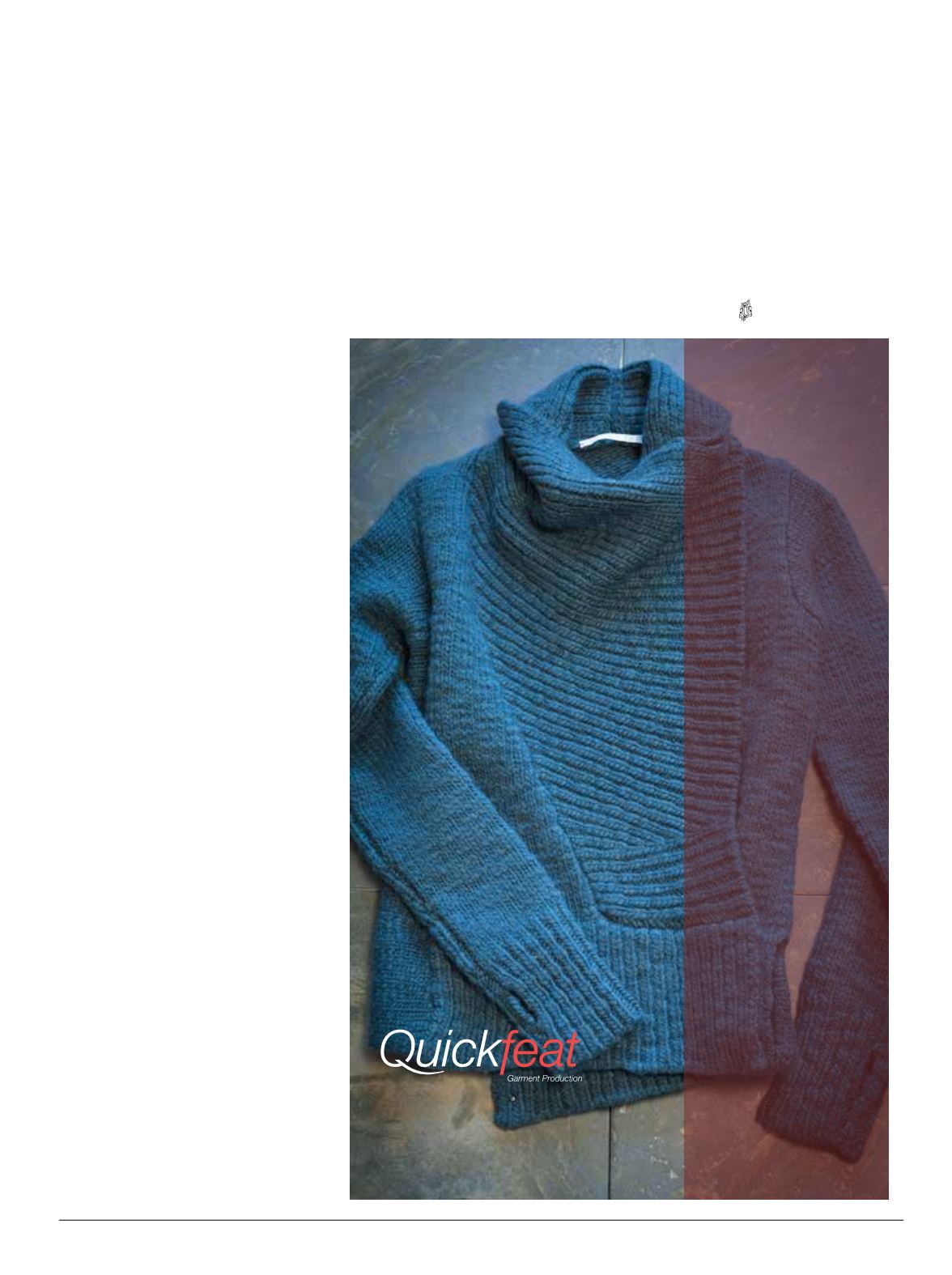

ronmental upside potential is worth
a critical look despite the downsides,
which tend to be the high cost of set-
up, minimum order quantities, incom-
patibility with protein-based fibers
and limited color availability.
This is precisely where
e.dyedif-
ferentiates itself in the solution dye
space.
E.dyehas invested in its own
pilot factory to prove that this technolo-
gy can be brought into the mainstream
in the outdoor segment.
“We have produced 3,800 colors,
and we have virtually no color mini-
mum because we control the indus-
trial process,” Murphy explains. This
alone will help bring solution dyeing’s
barrier-to-entry within reach of a larger
audience of environmentally and cost-
conscious manufacturers.
As good as this sounds, how does
solution dye color compare with tra-
ditional piece dyeing? The finished
products are indistinguishable side-
by-side. Solution dye performance is
without compromise with
e.dyeadding
yet another twist to the process. The
issue of color fidelity has always been
a long-standing problem in the dye
industry.
E.dyeresolves the problem
by using a proprietary color matching
and prediction system, the basis for its
intellectual property. The company for-
mulated its own color recipes in master
batches, essentially creating a unique,
reproducible, library of color standards.
This is in stark contrast to piece
dyeing houses where color matching
is ideally a best guess.
E.dye’s In-
novation Center in Kunshan, China,
ensures color curves and physical
samples produced in-house meet client
specifications. For designers, buying a
stock yarn color from
e.dyesaves time
and money, but according to Murphy,
half opt for custom solutions. If there is
a match and the colorant exists, says
Murphy, it only takes three to four days
to create a new recipe.
So
e.dye’s solution dye process
appears to check all the performance
boxes for the actual yarn dyeing step.
What about the rest of the downstream
textile process? Is there any water
used after leaving
e.dyeor a licensed
partner’s plant? “We make no claims
about water use after yarn production,”
Murphy responds. “We advise our mill
partners and encourage (best manu-
facturing practices). Some water is
normally used in scouring.”
Therefore, how do the two com-
peting dye technologies stack up?
Neither Drydye’s supercritical CO2
nor
e.dye’s solution dye process use
any water during the dyeing phase.
That is a positive step knowing how
resource exhaustive and polluting
traditional piece dyeing is. Yet cir-
cling back to Figure 1, it is just one
step of many in the textile manufac-
turing process, several of which use
lots of water, chemical treatments
and energy. All of which negatively
impact the communities surrounding
the textile industrial areas. Their wa-
ter supplies, water treatment and air
quality are all under duress.
Realistically, it is going to take years
of collaborations before textile manufac-
turing will match the level of clean Dry-
dye and
e.dyehas brought to the textile
process. Yet if the most egregious part
of the textile process can be scrubbed,
so can the rest.
APPAREL
SOURCING &
PRODUCTION
INDIA
VIETNAM
CHINA
HONG KONG
USA
Quickfeat
produces
sweaters, knits, wovens
outerwear, activewear,
leather, swim and
organics.
Our Services
- Fabric Sourcing
- Trim Sourcing
- Garment Development
- Factory Sourcing
- Production
- Quality Control
- Packing & Logistics
541 350 1615
Marketing O ice
Bend, Oregon USA
info@quickfeat.com | www.quickfeat.comSUMMER
2017
|
Inside
Outdoor
39
















